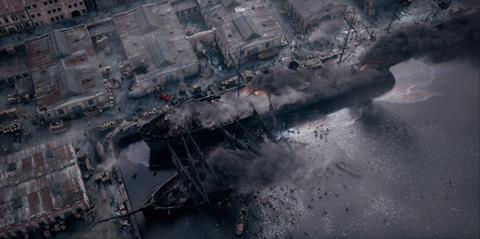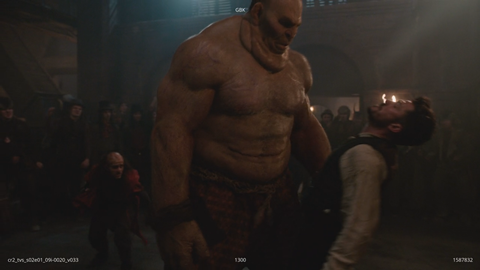VFX house provided 123 shots and over 50 character and environment assets for second series of fantasy show

Goodbye Kansas Studios has revealed the work that went into VFX on the second series of Carnival Row.
The neo-noir fantasy show, which stars Cara Delevigne and Orlando Bloom as the main characters in a world where mystical creatures are refugees in human society, had its first season in 2019 and the second season premiered in February.
Goodbye Kansas delivered 123 shots and over 50 character and environment assets for the second series, utilising a team of over 100 VFX artists and technicians. This was supervised by Joel Lindman as VFX supervisor and Staffan Linder as animation lead. The team described the brief as a “mixed bag”, ranging from fairytale digital characters and monstrous transformation sequences to crowd simulations and entire CG environments.
Carnival Row incorporates a strong element of fantasy in a Steampunk-style world, so digitally transforming characters into their fairytale counterparts using motion capture played a big part in Goodbye Kansas’s repertoire of project work. The Goodbye Kansas team had to ensure that the digital characters both seamlessly fitted in with the visual look of the scene, and didn’t miss a beat against the acting performances of the human characters.
Lindman explained: “What was pretty interesting on this show is that we received the plates where they had filmed the human characters, and then roto-animated the digital character towards those original shots. We made a model that moves in the same way as the actor in a 3D space.” Next, they tracked the camera to see how it behaved, which fed into the monitor in the motion capture studio. “In the mocap studio, we could see everything on the monitor, while watching the mo-cap actor walking around in real-time. We could direct the digital character to act against the opposing ‘real-life’ character from the original shooting, all in real-time.”

This process was instrumental in a sequence where Philo (Bloom) faces a nine-foot troll. Linder added: “That was challenging as we had to consider Orlando [Bloom]’s acting. It all had to fit as closely as possible, especially the timing, which is tricky in motion capture as the actor needs to work alongside something that they can only see on the monitor.” The team brought in other actors to replicate Bloom’s placement and movements, which involved plenty of trial and error. “Of course, we then needed to make the connection between the digital and the real by tweaking positions, as we didn’t have an exact map of the space to work towards.”

With so many moving parts to the digital characters, the team explored the boundaries of their imagination within the confines of real world physics. “We had one shot with fairies that flew around with wings, which was filmed on the client’s side with real people in the studio. When they shot it, they were hanging on wires and acting like they were flying,” Lindman said.
“But the physics of that would actually be different: hanging on a wire is not the same as having the wings on your back, which would pull you up as you fly.” Goodbye Kansas brought in a new form of mocap rig to create more realism in the flying movements. “The rig was forked, meaning the mocap actors could attach it to their hips and be moveable on all axes as they flew around.”







No comments yet